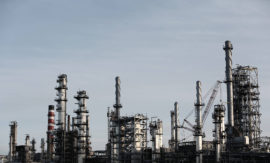Intended learning outcomes: Determine the needed quantity of feed product and the required number of batches per stage for the production of the desired quantity of the active substance.
For the production in a three-step batch process of 500 tons of an active substance for use in pharmaceutical products, chemical reactors of different sizes come into operation. Figure 8.7.3.1 describes the production sequences with batch size and yield in each process step. Please note that the figure does not show a mass balance or a bill of material.
Fig. 8.7.3.1 Batch size and yield in each process step for an active substance.
Problem: Determine the needed quantity of feed product and the required number of batches per stage for the production of the desired quantity of the active substance. Please be aware that only complete batches can be produced.
Solution:
- Production quantity of active substance: 500 t
- Stage 3:
- Yield: 89 % → demand for A*: 562 t
- Batch size: 4.5 t → number of batches: 124.9 → 125
- → Actual demand for A*: 562.5 t
- Stage 2:
- Yield: 78 % → demand for A: 722 t
- Batch size: 6.2 t → number of batches: 116.5 → 117
- → Actual demand for A: 725.4 t
- Stage 2:
- Yield: 95 % → demand for feed product: 764 t
- Batch size: 16.5 t → number of batches: 46.3 → 47
- → Actual demand for feed product: 775.5 t
Course section 8.7: Subsections and their intended learning outcomes

8.7 Scenarios and Exercises
Intended learning outcomes: Differentiate between batch production and continuous production. Calculate an example of manufacture of by-products. Elaborate an example of production planning in process industries.

8.7.1 Scenario: Batch Production versus Continuous Production
Intended learning outcomes: Differentiate between batch production and continuous production. Explain the criteria that are important for the decision for one or the other of these concepts.

8.7.2 Exercise: Manufacture of By-Products
Intended learning outcomes: Estimate how much money can be invested in a distillation device, if management sets a limit of 2 years maximum for payback on this kind of investment.

8.7.3 Exercise: Production Planning in Process Industries
Intended learning outcomes: Determine the needed quantity of feed product and the required number of batches per stage for the production of the desired quantity of the active substance.
